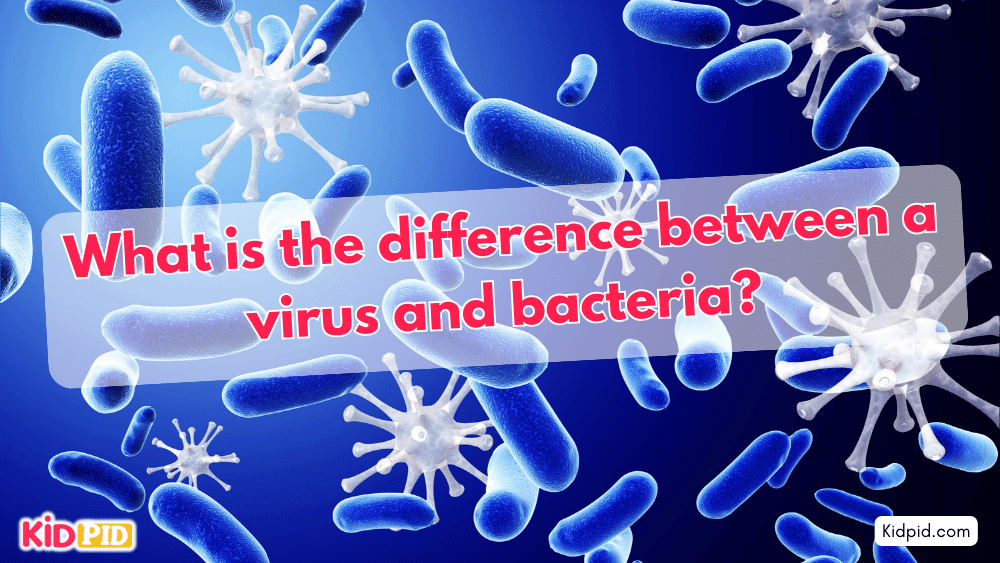Viruses are tiny infectious agents that require a living host to replicate, while bacteria are single-celled microorganisms that can live independently. Viruses are generally smaller than bacteria and can cause diseases by hijacking the host’s cellular machinery. Bacteria can be beneficial or pathogenic and can survive in a wide range of environments.
Contents
MCQs
1. Which of the following can be treated with antibiotics?
A) Virus
B) Bacteria
C) Both
D) Neither
Answer: B) Bacteria
Explanation: Antibiotics are designed to kill or inhibit the growth of bacteria. They are not effective against viruses.
2. How do viruses reproduce?
A) By dividing on their own
B) By infecting host cells
C) By photosynthesis
D) By absorbing nutrients from the environment
Answer: B) By infecting host cells
Explanation: Viruses reproduce by attaching to a host cell and inserting their genetic material, which then uses the host’s cellular machinery to produce new viruses.
3. Which of these is a characteristic of bacteria, but not of a virus?
A) Can exist and multiply outside a host
B) Contains genetic material
C) Can be seen under a light microscope
D) Needs a host to reproduce
Answer: A) Can exist and multiply outside a host
Explanation: Bacteria can survive and reproduce outside a host in various environments, unlike viruses that require a host cell to replicate.
4. What shapes can bacteria have?
A) Spiral only
B) Rod only
C) Spherical only
D) All of the above
Answer: D) All of the above
Explanation: Bacteria come in various shapes, including spherical (cocci), rod-shaped (bacilli), and spiral (spirilla).
5. Which of the following is a common way that viruses are spread?
A) Eating contaminated food
B) Drinking clean water
C) Breathing in fresh air
D) Touching an infected surface and then your face
Answer: D) Touching an infected surface and then your face
Explanation: Viruses can be spread through direct contact with contaminated surfaces or through the air by droplets.
Read More
